Symposia at the International Neuroscience Conference 2026, Budapest
Symposium I. Aging and rejuvenation
Time: 10:40 – 12:10
Date: 29 January (Thursday) 2026
Co-chairs: Pircs Karolina (HCEMM-SU Neurobiology and neurodegenerative diseases research group, HUN-REN-SZTAKI-SU Rejuvenation Group)
& Kerepesi Csaba (HUN-REN-SZTAKI-SU Rejuvenation Group, MILAB)
Scientific program:
Kerepesi Csaba (HUN-REN-SZTAKI-SU Rejuvenation Group)
Determining biological age by AI
Joana Ferreira (Synapse Architecture Group, MIA-PORTUGAL, University of Coimbra)
Super-resolution microscopy for studying age-related synaptic changes
Torma Ferenc (Research Institute of Sport Science, Hungarian University of Sport Science)
FitAge: Biological Aging Through the Lens of Physical Fitness and Function
Vakli Pál (HUN-REN Research Centre for Natural Science, Brain Imaging Centre)
Brain Age Biomarkers Derived from Structural MRI
Pircs Karolina (HCEMM-SU Neurobiology and neurodegenerative diseases research group, HUN-REN-SZTAKI-SU Rejuvenation Group)
Direct neural reprogramming: New possibility to model aging and age-related neurodegenerative diseases
Symposium II. Multimodal maps of mind: from circuits to systems in health and disease
Time: 15:30 – 17:00
Date: 29 January (Thursday) 2026
Chair: Gergely Szalay (HUN-REN Institute of Experimental Medicine — Laboratory of 3D Functional Network and Dendritic Imaging)
Scientific program:
Balázs Rózsa (HUN-REN Institute of Experimental Medicine — Laboratory of 3D Functional Network and Dendritic Imaging)
Brain interface for fast 3D photostimulation, voltage, and Ca2+ imaging of PV-, SOM-, and VIP-expressing interneuron networks and dendrites in V1 during visual learning in freely navigating animals
Štěpán Kortus (Institute of Experimental Medicine of the Czech Academy of Sciences)
Correlative preclinical imaging combining 2P, MRI and light-sheet microscopy for studies of glioblastoma
Jochen Herms (Ludwig-Maximilians-Universität München (LMU) Institute for Neuropathology)
In vivo Imaging of Axonal Pathology in Alzheimer’s Disease
Wulf Haubensak (Medical University of Vienna, Division of Neuronal Cell Biology, Center for Brain Research)
Affective states from amygdala-cortical hierarchical interactions
Symposium III. Neuromethods
Time: 10:40 – 12:10
Date: 30 January (Friday) 2026
Chair: Péter Gombkötő (ETH, Zürich, Department of Information Technology and Electrical Engineering, Institute of Neuroinformatics)
Scientific program:
Domokos Meszéna (HUN-REN Research Centre for Natural Sciences, Institute of Cognitive Neurosciences and Psychology)
Probing laminar ensemble dynamics in the human neocortex using high-density intraoperative multielectrodes
Péter Gombkötő (ETH, Zürich, Department of Information Technology and Electrical Engineering, Institute of Neuroinformatics)
MRI-visible ultra-flexible electrodes for stable, high-resolution recordings of brain networks
Daniel Hillier (HUN-REN Research Centre for Natural Sciences, Institute of Cognitive Neurosciences and Psychology, Faculty of Information Technology and Bionics, Pázmány Péter Catholic University, Budapest, Hungary)
Unlocking brain plasticity: a multimodal approach to interrogating and modifying neural circuits
Attila Kaszás (HUN-REN Research Centre for Natural Sciences, Institute of Cognitive Neurosciences and Psychology)
Combined deep-tissue imaging and electrophysiology for the treatment of glioblastoma and tumor-related epilepsy
Gábor Orbán (Microtechnology for Neuroelectronics (NetS3 Lab), Istituto Italiano di Tecnologia - IIT)
Next-Gen CMOS bioelectronics for scalable neural monitoring and modulation
Symposium IV.
Research networks around Richter -
how open innovation strategies could advance translational neuroscience
Time: 15:30 – 17:00
Date: 30 January (Friday) 2026
Co-chairs: Zsolt Némethy & Balázs Lendvai (Richter Gedeon Nyrt.)
Scientific program:
Zsolt Némethy (Richter Gedeon Nyrt.)
General introduction
Ádám Dénes (HUN-REN Institute of Experimental Medicine)
Targeting inflammatory networks and glial mechanisms in CNS disorders
Szilvia Benkő (University of Debrecen, Faculty of Medicine, Department of Physiology)
In vitro macrophage models for drug research
László Cervenák (Semmelweis University, Department of Internal Medicine and Hematology)
Mesenchymal stem cells in inflammation
Balázs Hangya (HUN-REN Institute of Experimental Medicine)
Dopamine dynamics in complex associative learning paradigms
